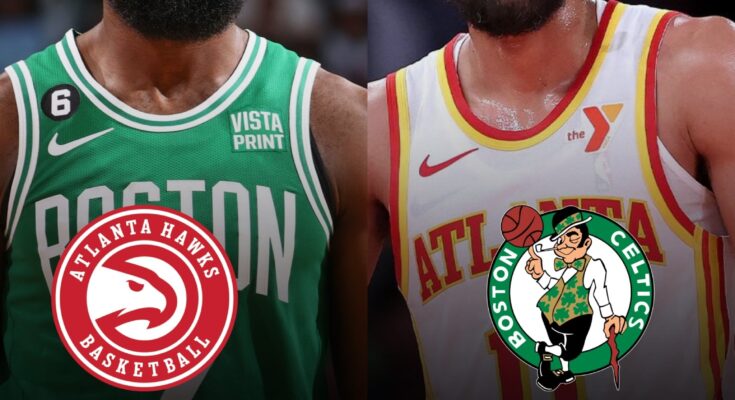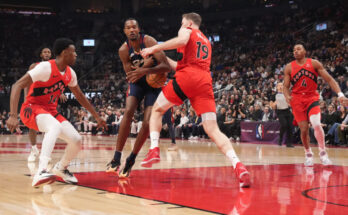The hypothetical trade between the Boston Celtics and the Atlanta Hawks, featuring Jaylen Brown moving to Atlanta and Trae Young heading to Boston, has been a hot topic among NBA fans and analysts alike. This mock trade sparks fascinating discussions about team identity, roster construction, and championship aspirations for both franchises. To fully appreciate the potential ramifications of this deal, it’s essential to delve into the players involved, the team contexts, and the broader strategic implications for each side.
Jaylen Brown is an elite wing player, known for his two-way abilities. Over the years, Brown has evolved into a versatile scorer and a lockdown defender, making him one of the most valuable assets in the league. His length, athleticism, and improving offensive game allow him to excel both as a secondary scorer and a primary defender on the perimeter. Brown has shown consistent improvement in his shooting and playmaking, developing a more polished offensive repertoire that complements his natural explosiveness and physical tools. Defensively, he is a major asset with his ability to guard multiple positions, disrupt passing lanes, and apply pressure on opposing ball handlers. For the Celtics, Brown has been a cornerstone of their roster, a key piece alongside Jayson Tatum, providing balance on both ends of the floor. His combination of size, skill, and effort makes him an irreplaceable asset in Boston’s system.
Trae Young, on the other hand, is one of the most dynamic and polarizing point guards in the league today. He’s a supreme offensive talent, capable of putting up huge scoring numbers while also creating for his teammates at a high level. Young’s game is defined by his deep range shooting, quick ball handling, and ability to make plays in tight spaces. His style is flashy and aggressive, often dictating the pace of the game and forcing defenses to react constantly. While Young’s shooting and playmaking are undeniable, his defense has been a consistent critique throughout his career. His size and defensive fundamentals sometimes leave him vulnerable against bigger, stronger guards and wings. Despite these concerns, Young has proven to be a clutch performer and the clear focal point of the Hawks’ offense, driving their postseason hopes.
For the Celtics, acquiring Trae Young would signal a shift toward a more perimeter-oriented offensive system centered around an elite playmaker. Boston’s offense has often revolved around the inside-out approach with Jayson Tatum as the primary scorer and creator, complemented by strong wings like Brown and a physical frontcourt anchored by players like Robert Williams and Al Horford. Bringing in Young would give Boston a dynamic ball handler who can stretch defenses with his deep shooting and excel in pick-and-roll scenarios. This could potentially open up new avenues for Tatum, allowing him to play off the ball more or operate in less traditional roles. Young’s elite passing would also elevate the offensive efficiency by increasing scoring opportunities for the Celtics’ shooters and big men.
However, this would come at the cost of losing Jaylen Brown’s defensive prowess and versatility. Boston’s defense, which has been a cornerstone of their identity, might take a hit without Brown’s lockdown ability on the wing. The Celtics would need to find ways to compensate for this loss, perhaps leaning more heavily on their frontcourt defenders or seeking additional perimeter defenders through trades or free agency. Furthermore, Young’s defensive liabilities could be exacerbated in the Eastern Conference playoffs, where matchups against elite guards and wings could pose challenges. Boston’s coaching staff would need to implement strategic defensive schemes to mitigate these issues.
On Atlanta’s side, acquiring Jaylen Brown would represent a major upgrade to their roster and a shift in their team dynamics. The Hawks have been a young, exciting team with Trae Young as the centerpiece. Young’s scoring and playmaking have carried the team to multiple playoff appearances, but the Hawks have struggled with consistency, particularly on defense and in maintaining a balanced attack. Bringing in Jaylen Brown would bolster the Hawks’ wing defense and add a high-level two-way player who can score efficiently without needing to dominate the ball.
Brown’s ability to guard multiple positions and his relentless work ethic would significantly improve Atlanta’s defensive identity, something that has been a weakness for the Hawks in recent years. Offensively, Brown would fit well alongside Young by providing a complementary scorer who can create his own shot and thrive in catch-and-shoot situations. His improved playmaking skills would allow the Hawks to run more diverse offensive sets and reduce the burden on Young to carry the offense every night. This trade would also give the Hawks a more balanced roster with multiple legitimate threats, making it harder for opposing teams to focus their defensive attention solely on Young.
However, losing Trae Young would mean Atlanta parts ways with their franchise point guard and primary playmaker. This would necessitate a significant adjustment in the Hawks’ offensive schemes and overall team identity. The Hawks would need to find or develop another guard capable of handling the ball and creating offense at Young’s level, or they might adopt a more team-oriented approach where the ball movement replaces individual creation. This change could ultimately pay dividends if Brown’s presence helps the Hawks become a more consistent and defensively sound team, but it would likely be a challenging transition initially.
The broader implications of this trade also reflect the current NBA trends around team-building and the evolving roles of star players. The Celtics, by acquiring Trae Young, would be doubling down on the modern NBA style that prioritizes elite shooting and playmaking from the point guard position. Young’s ability to stretch the floor and generate offense in multiple ways aligns with the league’s emphasis on pace, space, and pick-and-roll efficiency. Boston’s frontcourt players would benefit from this increased spacing, potentially unlocking new dimensions in their offensive game and making them more unpredictable and dangerous.
Conversely, the Hawks’ move to bring in Jaylen Brown suggests a renewed emphasis on defense and balanced scoring. While offensive firepower remains crucial, the importance of defense has been reaffirmed in recent years as a key factor in postseason success. Brown’s defensive versatility and physicality could help Atlanta close the gap between regular season success and playoff contention. This trade reflects the Hawks’ willingness to sacrifice a marquee offensive star in favor of a more well-rounded team capable of competing at a higher level defensively.
From a salary cap and contract perspective, this trade could be relatively straightforward. Both Brown and Young are on sizable contracts reflecting their All-Star status, but the salaries are close enough to facilitate a swap without complicated salary matching issues. This makes the trade more plausible in practical terms, assuming both teams agree on the value and fit of the players.
Another important consideration is the chemistry and culture impact for both teams. Jaylen Brown is known for his competitive spirit and leadership qualities, and his presence in Atlanta could boost the team’s morale and work ethic. For the Celtics, Trae Young’s fiery personality and on-court bravado could energize the team and fanbase but might also require adjustment in locker room dynamics, especially with established stars like Jayson Tatum.
This hypothetical trade also forces fans and analysts to reevaluate the Celtics-Hawks rivalry and Eastern Conference power balance. The Celtics acquiring Young could elevate their offensive firepower and make them even more formidable contenders against top teams like the Milwaukee Bucks and Miami Heat. Meanwhile, the Hawks adding Brown could improve their defensive standing and overall competitiveness, potentially moving them closer to an elite tier in the East.
Ultimately, this mock trade encapsulates the complex balancing act NBA teams face between offense and defense, individual talent and team fit, as well as short-term success versus long-term growth. It’s a bold move for both franchises that would reshape their identities and could influence their trajectories for years to come. Whether or not such a trade ever materializes, the discussion around Brown for Young underscores the ever-evolving nature of roster construction and the quest for championship success in today’s NBA.



